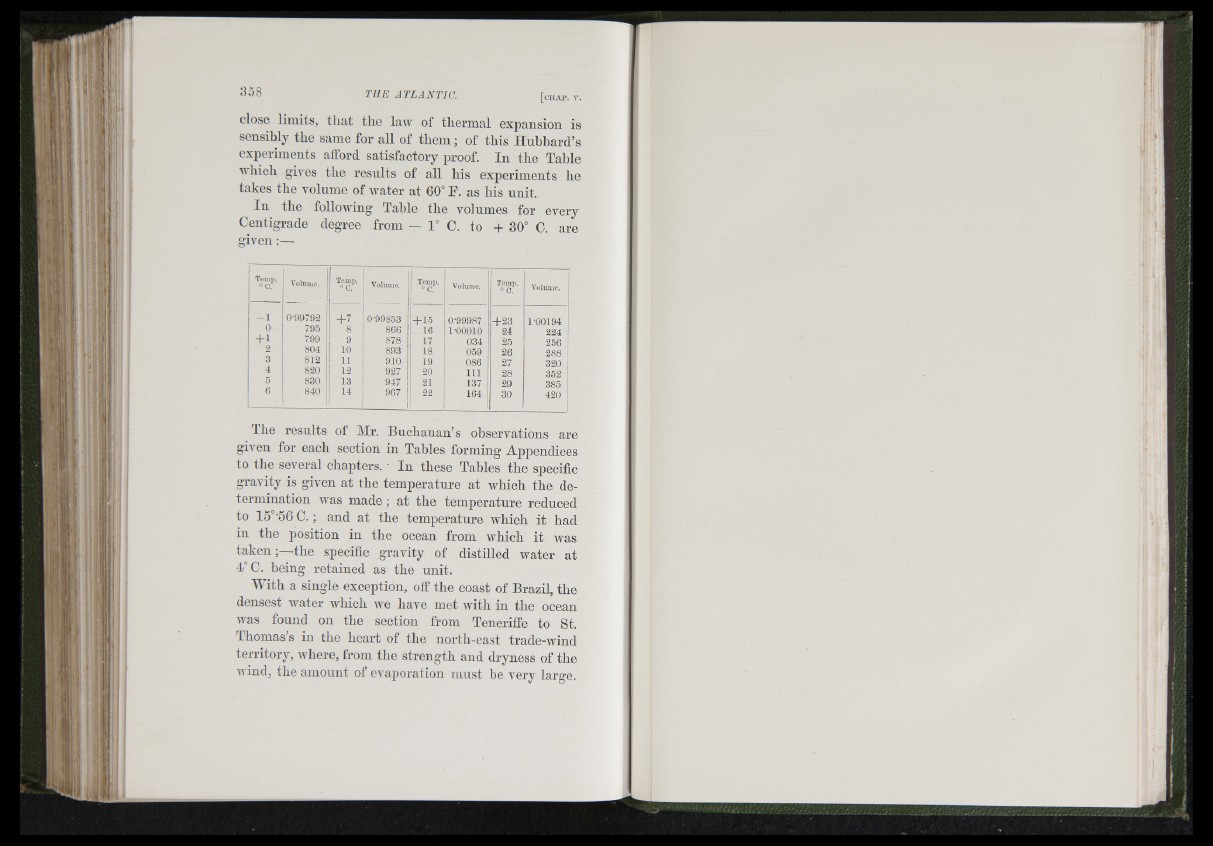
i.iil
i
close limits, th a t the law of thermal expansion is
sensibly the same for all of th em ; of this Hubbard’s
experiments afford satisfactory proof. In the Tahle
Avhich gHes the results of all his experiments he
takes the volume of water at 60° E. as his unit.
In the following Tahle the volumes for every
Centigrade degree from — 1° C. to + 30° C. are
given
Temp.
“ C. A'oluiue. Temp.
°C. Volume. Temp.
° C.
1
Volume. Temp.
° C, Volume.
- 1 0-99792 + 7 0-99853 + 15 0-99987 + 2 3 0 1-00194 795 8 866 16 1-00010 24 224
+ 1 799 9 878 17 034 25 256 2 804 10 893 18 059 26 288 3 812 11 910 19 086 27 320 4 820 12 927 20 111 28 352 5 830 ! 13 947 21 137 29 385 6 840 i 14 967 22 164 30 420
The results of Mr. Buchanan’s observations are
given for each section in Tables forming Appendices
to tlie several cliapters. ■ In these Tables tbe specific
gravity is given at tbe temperature at wbicb tbe determination
Avas made ; at the temperature reduced
to 15°’56 C. ; and at the temperature which it had
in the position in the ocean from which it was
taken the specific gravity of distilled water at
4°C. heing retained as the unit.
With a single exception, off the coast of Brazil, the
densest Avater which we have met AA'ith in the ocean
Avas found on the section from Teneriffe to St.
Thomas’s in the heart of the north-east trade-wind
territory, Avhere, from the strength and dryness of the
wind, the amount of evaporation must be very large.